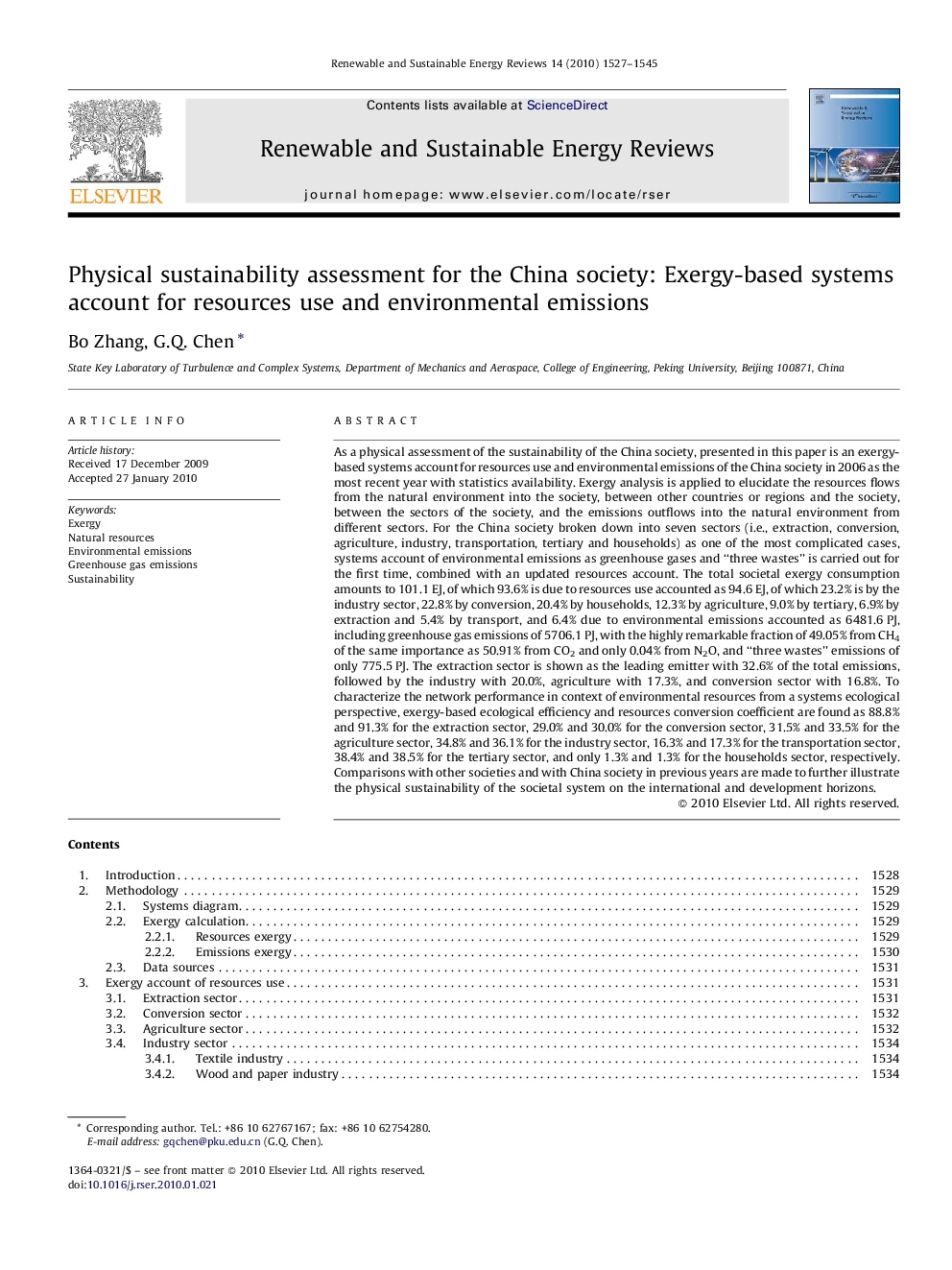| کد مقاله | کد نشریه | سال انتشار | مقاله انگلیسی | نسخه تمام متن |
|---|---|---|---|---|
| 1751609 | 1018419 | 2010 | 19 صفحه PDF | دانلود رایگان |

As a physical assessment of the sustainability of the China society, presented in this paper is an exergy-based systems account for resources use and environmental emissions of the China society in 2006 as the most recent year with statistics availability. Exergy analysis is applied to elucidate the resources flows from the natural environment into the society, between other countries or regions and the society, between the sectors of the society, and the emissions outflows into the natural environment from different sectors. For the China society broken down into seven sectors (i.e., extraction, conversion, agriculture, industry, transportation, tertiary and households) as one of the most complicated cases, systems account of environmental emissions as greenhouse gases and “three wastes” is carried out for the first time, combined with an updated resources account. The total societal exergy consumption amounts to 101.1 EJ, of which 93.6% is due to resources use accounted as 94.6 EJ, of which 23.2% is by the industry sector, 22.8% by conversion, 20.4% by households, 12.3% by agriculture, 9.0% by tertiary, 6.9% by extraction and 5.4% by transport, and 6.4% due to environmental emissions accounted as 6481.6 PJ, including greenhouse gas emissions of 5706.1 PJ, with the highly remarkable fraction of 49.05% from CH4 of the same importance as 50.91% from CO2 and only 0.04% from N2O, and “three wastes” emissions of only 775.5 PJ. The extraction sector is shown as the leading emitter with 32.6% of the total emissions, followed by the industry with 20.0%, agriculture with 17.3%, and conversion sector with 16.8%. To characterize the network performance in context of environmental resources from a systems ecological perspective, exergy-based ecological efficiency and resources conversion coefficient are found as 88.8% and 91.3% for the extraction sector, 29.0% and 30.0% for the conversion sector, 31.5% and 33.5% for the agriculture sector, 34.8% and 36.1% for the industry sector, 16.3% and 17.3% for the transportation sector, 38.4% and 38.5% for the tertiary sector, and only 1.3% and 1.3% for the households sector, respectively. Comparisons with other societies and with China society in previous years are made to further illustrate the physical sustainability of the societal system on the international and development horizons.
Journal: Renewable and Sustainable Energy Reviews - Volume 14, Issue 6, August 2010, Pages 1527–1545